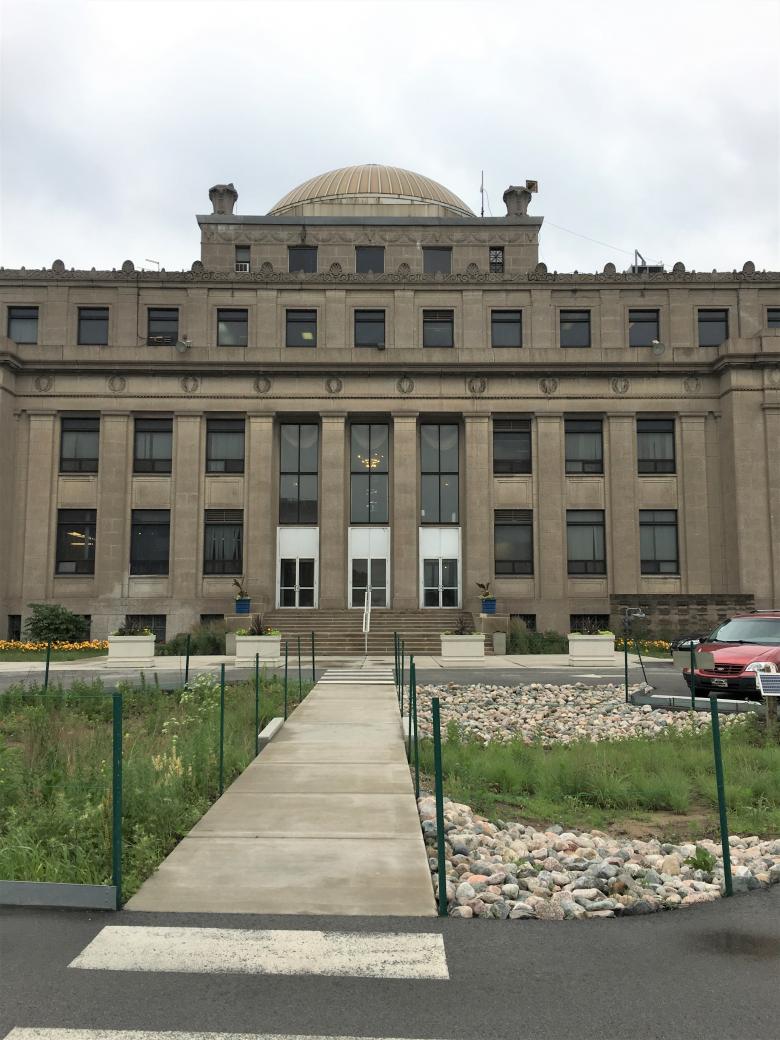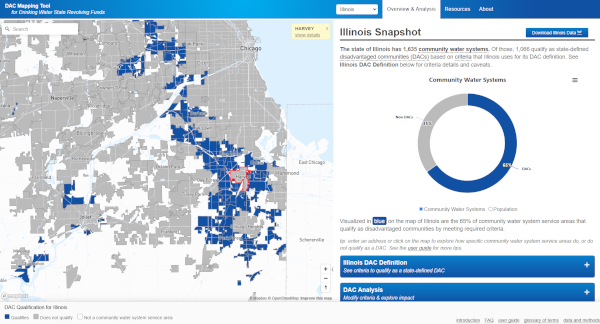In 1960, Gary, IN was a town of 178,000 residents with a strong economy and a water and sewer system to match. Today, Gary’s 78,000 residents are struggling with aging, oversized systems while facing a 36% poverty rate and a median income of $29,000. Gary’s Sanitary District has worked to keep bills down to preserve the affordability of wastewater services, but this has meant delaying necessary investments and reactively managing infrastructure failures that compromise water quality, cause inland flooding, decrease property values, and stymie economic development. How can Gary, or any Great Lakes city, address these problems in new ways?
CNT’s Great Lakes Water Infrastructure project conducted a series of workshops in Dearborn, MI; Flint, MI; and Gary, IN in 2018. The process accelerated innovation by creating necessary cross-departmental connections, working with real city data to understand problems and prioritize possible solutions, and focusing on actionable next steps. Here are some of the top approaches we identified:
1. Improve transparency and accountability
Local water debates often center around “rate” increases, but rates are not the whole story:
- There are important distinctions between rates and bills: a household using 4,000 gallons of water will have a lower bill than one with old leaking fixtures that use 7,500 gallons, even if they pay the same rate. The total bill is what matters to the customer.
- The usage fee for water is often only a small portion of a household’s water bill. CNT looked at water and sewer bills from several Great Lakes communities and found that fixed costs can make up as much as 75% of water and sewer bills, meaning that a reduction in water use will not make much of a dent in the overall bill.
- Water bills typically present an opaque set of charges that don’t explain what the user is really paying for, making it hard for households to value their water. This lack of understanding, if coupled with poor customer service, will result in a sense of distrust. Utilities should improve the transparency of billing—providing the data needed to take action on high bills and showing how payments contribute to specific system needs. Utilities should also work with community groups to reposition themselves as a supportive partner to customers, encouraging and facilitating home repairs that improve the system and save customers money.
2. Create multiple benefits with every solution
Investing to achieve triple-bottom line benefits is not a new concept, but it is still not widely used in municipal capital investment practices. By quantifying the social and environmental benefits associated with new investments, such as job training, health, or recreation, municipalities can increase finance options. At times, community benefits like rising home values negatively impact low-income residents or renters by causing displacement. Municipalities should protect against these unintended consequences by pairing investments with broader community control and affordability strategies, like local-hire policies and community benefits agreements.
3. Scale beyond government
Incentivizing private investment and action on private property is essential to getting many water infrastructure solutions to scale.
- Several communities are already doing this to “get the lead out” of service lines.
- Green stormwater infrastructure on private land can reduce the overall stormwater runoff burden on the sewer system, and water efficiency upgrades and home weatherization can reduce the system’s electrical load.
- Coordinating private property investments using a “one stop shop” service can blend funding and financing options and make it easier for home and property owners to participate. Coordinated programs also make it easier to target vulnerable populations that are unlikely to make investments on their own but would receive the most positive impacts from private property improvements.

4. Consider affordability in context
Water costs are a major burden on many low- and moderate-income households, and communities should adopt progressive water rates and affordability programs to ease this burden. But, other expenses are rising too, and incomes have not kept up. Communities should approach affordability by coordinating energy and water efficiency efforts to bring bills down. Water affordability also needs to be built systematically throughout the community—utility energy efficiency and on-site energy generation can keep system costs down, incentivizing denser land uses can make more efficient use of infrastructure, and water infrastructure improvements can be used as economic development opportunities.
CNT would like to thank our funders – the Charles Stewart Mott Foundation, the Surdna Foundation, and the Joyce Foundation – for their generous support for this effort. Thanks to them, as well as individual donors, CNT staff are working to develop innovative solutions to water infrastructure risks in Great Lakes cities with the goals of improving health, equity, affordability and efficiency. If you are interested in having a Water Infrastructure Workshop in your community or partnering with us in other ways, please get in touch with Anna Wolf or Jen McGraw.





 Strengthening Transit Through Community Partnerships
Strengthening Transit Through Community Partnerships